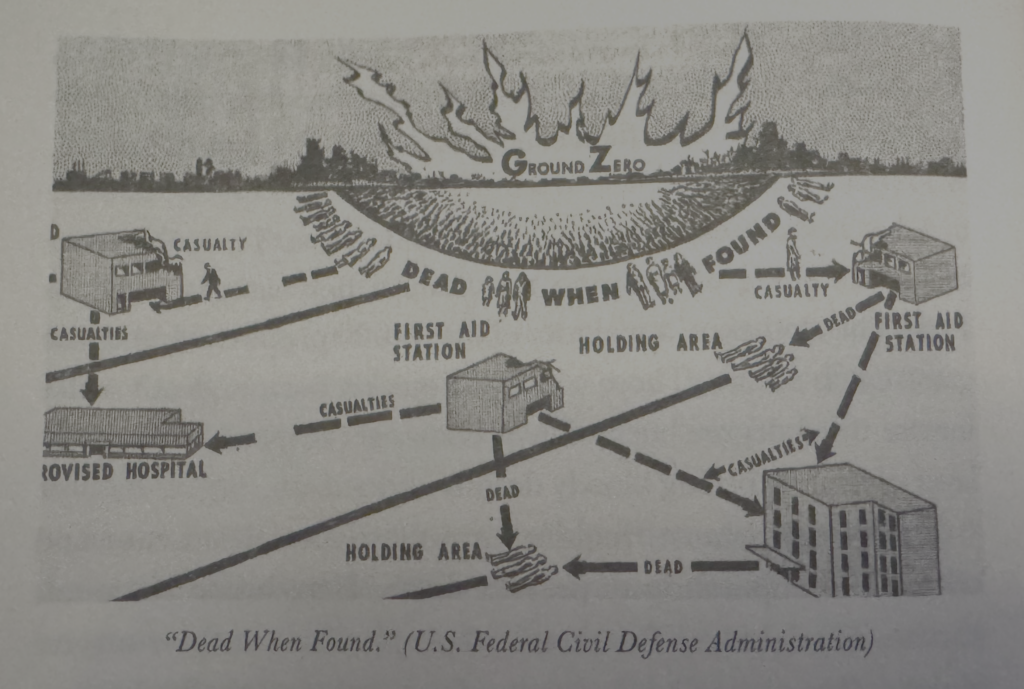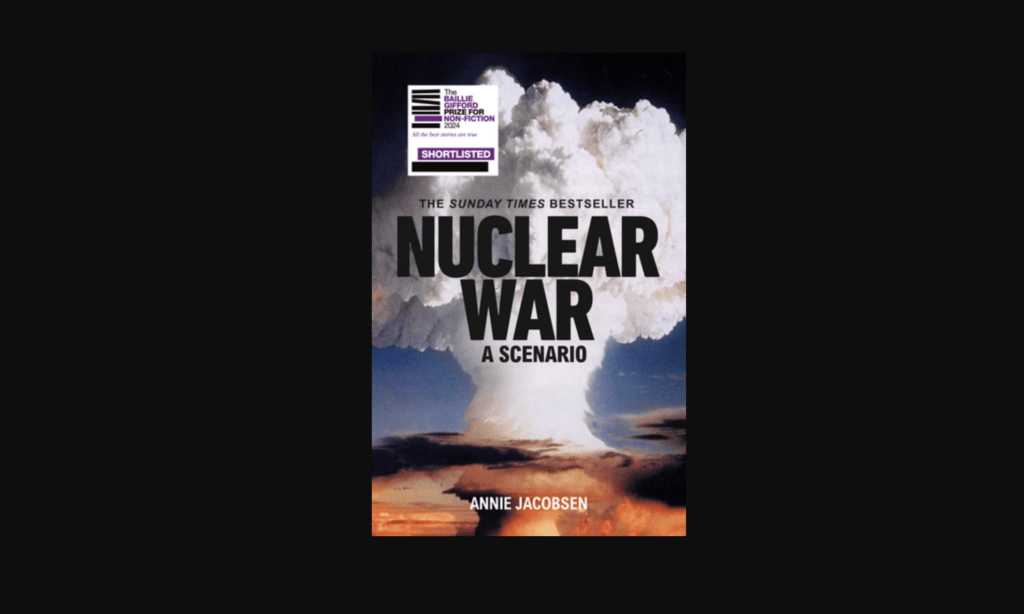Annie Jacobsen’s “Nuclear War: A Scenario,” published by Torva Books, offers a harrowing exploration of the catastrophic consequences of nuclear conflict. Through meticulous research and compelling storytelling, Jacobsen presents a minute-by-minute account of a hypothetical nuclear war, blending factual information with speculative scenarios.
Jacobsen opens her account of nuclear war with a quote from Winston Churchill: “The story of the human race is war. Except for brief and precious interludes, there has never been peace in the world; and before history began, murderous strife was universal and unending.”
The prologue, titled “Hell on Earth”, is set in Washington D.C., sometime in the not-too-distant future.
Nuclear war, she writes, begins with a blip on a radar screen. What follows is chronicled minute by minute.
The detonation of a 1-megaton thermonuclear warhead starts with a blinding flash. The heat is beyond comprehension — five times hotter than the sun’s core. Nothing inside the fireball survives. If the Pentagon were hit, all 27,000 people working there would be wiped out in an instant.
Since the second presidential term of Ronald Reagan, global stockpiles of nuclear warheads have dropped from 70,000 to just over 12,000 today. But the threat never went away.
U.S. intercontinental ballistic missiles (ICBMs) are pointed at North Korean targets — launch sites, command bunkers, and leadership — yet to reach them, they have to fly over Russian airspace. They simply can’t make the trip any other way.
That’s a problem. Russia’s early warning system is riddled with glitches, and both Russia and the U.S. keep parts of their arsenals on hair-trigger alert. Either side can opt for a “launch on warning” — firing before a single warhead even lands.
If U.S. early warning systems detect an incoming strike, the president has just minutes to decide whether to retaliate. In that moment, they’ll be bombarded with urgent, often contradictory intel, under pressure from military brass urging protocol — a path that almost certainly leads to launch.
Only the president can make the call. And once they do, no one has the power to stop it. It’s known as sole authority — arguably the most terrifying fact on Earth. A few individuals, without needing to ask anyone, can end civilisation in under ten minutes.

Ground Zero Scenario
- Initiation of Conflict: The narrative begins with North Korea launching a Hwasong-17 ICBM targeting Washington, D.C., catching the U.S. defence systems off guard and setting the stage for global turmoil.
- Missile Defence Failure: Despite the deployment of four interceptor missiles from California, the U.S. missile defence system fails to neutralize the incoming threat, leading to catastrophic consequences.
- Presidential Evacuation: The U.S. President’s evacuation process is depicted in vivid detail, showcasing the chaos and urgency as national leadership attempts to respond to the crisis.
- Secondary Attack: North Korea escalates the conflict by launching a submarine-based missile that successfully strikes the Diablo Canyon Nuclear Power Plant in California, causing a nuclear meltdown and widespread panic.
- Communication Breakdown: The narrative explores the breakdown of communication channels between global powers, leading to misinterpretations and hasty decisions that exacerbate the conflict.
- Russian Retaliation: Misinterpreting the U.S. counterattack as a threat to its own security, Russia launches a massive nuclear strike against the United States and its NATO allies, leading to widespread devastation.
- Global Nuclear Exchange: The book details the rapid escalation into a full-scale nuclear war, with multiple countries launching their arsenals, resulting in the decimation of major cities and the loss of hundreds of millions of lives.
- Nuclear Winter: Jacobsen delves into the environmental aftermath, describing how the massive release of particulates into the atmosphere leads to a “nuclear winter,” drastically reducing global temperatures and collapsing ecosystems.
- Societal Collapse: The narrative portrays the breakdown of social order, with survivors facing radiation sickness, food shortages, and the collapse of infrastructure, painting a grim picture of post-nuclear war existence.
- Call for Disarmament: In her conclusion, Jacobsen emphasizes that the true enemy is not any particular nation but the existence of nuclear weapons themselves, advocating for global disarmament to prevent such a catastrophic scenario.
Annie Jacobsen was still in school in 1983 when ABC aired The Day After — a harrowing film about nuclear war. It left a mark, and she’s never shaken it off.
Forty years on, she’s written a fact-based scenario inspired by that film. Her narrative draws on dozens of interviews with military and civilian experts — the people who’ve built the weapons, drafted the response plans, and carried the weight of life-and-death decisions.
Jacobsen effectively illustrates the fragility of modern civilization in the face of nuclear threats. It’s a detailed account of how a single missile launch can spiral into global devastation. The book lays bare the flaws in today’s defence systems and the catastrophic risks posed by miscommunication between nuclear-armed states.
The book serves as a stark reminder of the existential threat posed by nuclear weapons and the imperative for international cooperation to prevent such a scenario.
Annie Jacobsen Nuclear War: A Scenario, was shortlisted for the Baillie Gifford Prize. A 2016 Pulitzer Prize finalist, her other books include Area 51, Operation Paperclip and Surprise, Kill, Vanish, and have been translated into 26 languages. She also writes and produces TV, including Tom Clancy’s Jack Ryan.



